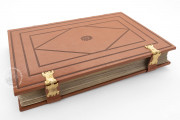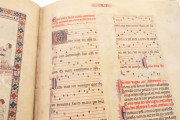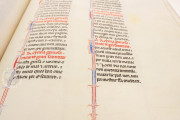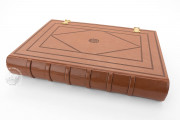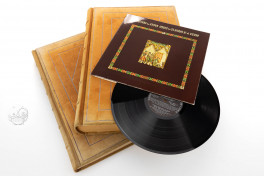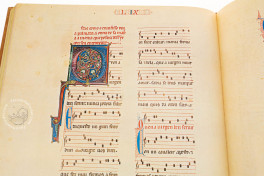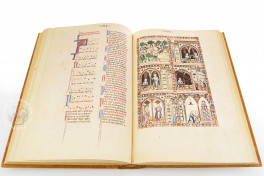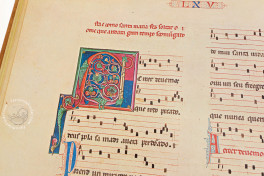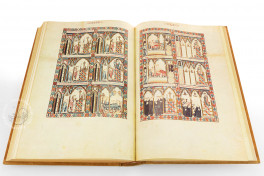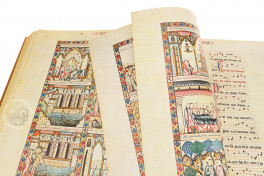The Escorial Cantigas de Santa Maria, also known as the Códice Rico, is one of the four surviving manuscripts of a large corpus of Christian songs in Galician praising the Virgin Mary. The authorship of the poems is debated: the poet Aras Nunez and Alfonso X, King of Castile and Leon, are thought to have composed some of the repertoire. The most sumptuous of the surviving codices of the Cantigas, the Escorial volume is lavishly illustrated with more than 200 miniatures—most full-page and divided into six scenes—depicting a wide range of subjects.
This volume is the third of the four surviving manuscripts that preserve the Cantigas repertoire: settings in a narrative format relating to Marian's miracles and festivities. Although incomplete, this manuscript is considered the most important thanks to its miniatures. It is made up of 256 folios of parchment, written in the elegant French script of the 13th-century codices. Originally the manuscript contained 200 cantigas, but the loss of some folios has reduced the count to 196.
The authorship of the poems is unknown – research guessed that the Galician poet Airas Nunes may have had a part but also King Alfonso X is believed to be the author of some pieces.
This codex was lavishly illustrated with 1,257 miniatures and depicts a vast array of human typologies in 13th-century Spain. Only one of the illustrations is divided into eight vignettes (the one belonging to the first cantiga), while the others have six. Two of these miniatures portray important aspects of Alfonso's life and cultural activities.
The first one is on fol. 4v and it fills the entire first column. Under a gothic arch supported by two columns, the king is seated with a parchment in his hand with the inscription "Because composing songs is an art which requires great understanding, therefore he who undertakes it must have this quality", which are the words that begin the Prologue B. There are three singers in each of the side arches, holding parchments in their hands.
The second miniature is on fol. 5 where the Alfonso X is also represented seated under a central arch, with an open book on a table, and in the adjoining arches, two scribes write the cantigas the king is dictating to them. The writing shows letters on a musical staff. In the last arch, on the right of the king, stand three musicians with vihuelas de arco and vihuelas de péñola; and in the left one, there are four singers with tonsure.
Some scholars argue that El Escorial's "Codice Rico" and the Florentine one (Bibl. Nazionale Centrale, Banco Rari 20) were part of one work that was to contain 300+ cantigas, however, there is a difference in the organization of the miniatures in the two sources.
The musical notation of the cantigas follows forms similar to that used for Gregorian chant but with some hybrid shapes that give information (ambiguously) on the length of the notes. The metrics of the poems are extraordinarily diverse (280 different forms for all 420 surviving cantigas), the most common being virelai and rondeau.
We have 2 facsimiles of the manuscript "Escorial Cantigas de Santa Maria":
- Cantigas de Santa Maria, El Códice Rico facsimile edition published by Testimonio Compañía Editorial, 2011
- Cantigas de Santa María facsimile edition published by Edilan, 1979


